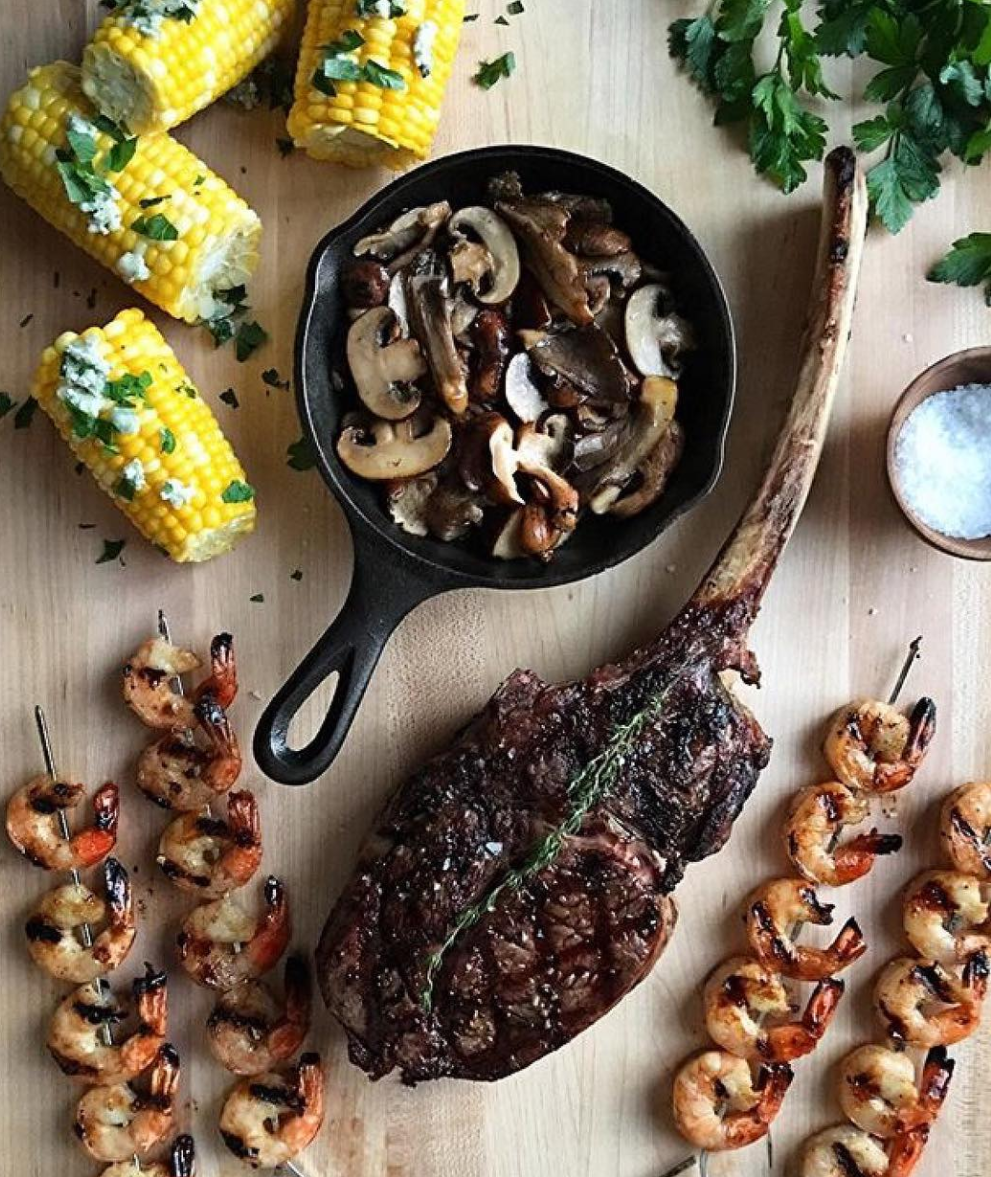Everything You Need To Know For Cooking With A Cast Iron skillet
@lodgecastiron
So you’ve been caught up in the cast iron craze going on recently, that’s understandable. A good Cast Iron skillet is one of the most adaptable pieces of cookware you can find in a kitchen. It can sauté, fry, or bake, on the cooktop or in the oven, and you don’t have to worry about scratching off the non-stick surface of the pan like you would with most non-stick pans. They are functionally indestructible, but don’t hold me to that, and they can last for generations. Furthermore as you use a Cast Iron skillet it absorbs flavors over time allowing you to create complex culinary experiences. The only reason you won’t find them in every kitchen is because they require a little bit of maintenance. Luckily we’re here to give you a guide on everything you’d need to know so you can start cooking as soon as possible.
The Skillet
First thing’s first you need to actually have a Cast Iron to cook with one, for some of us this won’t be a problem, but for those of you who are considering purchasing a skillet but aren’t sure which one to get here’s an example
The Lodge 12’: Effective, cheap, and made in America Lodge is a safe and reliable choice for a beginner Cast Iron skillet. Furthermore Lodge is generally one of the highest rated brands in Cast Iron.
Preparation
Now a lot of skillets will advertise themselves as ready to cook out of the package, but that’s not quite true. Before cooking for the first time with your skillet you should rub down every part with a light soap with a scouring pad, or steel wool. This is the only time you should use soap on your skillet as soap will ruin your seasoning. Once you’re sure that you’ve cleared away gunk that might have been there you should run it under hot water, and then rub it down again with the hard side of a sponge. An important thing to remember whenever you’re dealing with a Cast Iron is that water will make it rust, don’t worry too much as you can easily remove any rust from your skillet by cleaning it with steel wool, but it is important to dry your skillet after exposing it to water. The best way to do that is to simply put it on a heated stovetop and boil the water off of it. Once you’re sure the skillet is completely dry you can start seasoning it. Seasoning a Cast Iron skillet is the process of creating an au-naturel non-stick coating around your skillet. Without seasoning the surface of your skillet is very rough and porous, so it’s absolutely essential you make sure to apply at least one layer, I prefer to put on few layers of seasoning. To do this you simply need to pour some oil on your skillet, Flaxseed oil is the gold-standard but canola or olive oil will work as well, and spread it across the entire surface of your skillet with a paper towel. After you’ve spread the oil all over you need to try to wipe as much of it off as you can, a common mistake people make is to leave to much oil on, you only need a very light coating to create a layer of seasoning. After that you place your Cast Iron in your oven facedown at around 450-500 degrees. You should leave it in for about an hour, and after letting it cool it should come of the oven looking glossy. If the pan is discolored or sticky then you either didn’t wipe off enough oil or you didn’t heat it enough.
Cooking
When cooking with a Cast Iron you do need to preheat the pan, Cast Irons retain heat really well and so preheating helps make sure you can cook everything evenly. A common mistake people make is to put cold food into a cold skillet, or to try to move their foods around too much which will make it stick. When cooking something like a steak you just need to lightly oil the pan and then let it sit until you start to see the brown crust forming, if you are having trouble moving your meats it means it’s not done cooking on that side. One of the great benefits of a Cast Iron when you’re cooking is that you can start your recipe on the stovetop and then move it into the oven without having to dirty another dish, this gives you a lot more control when you’re cooking and it helps you save time cleaning after the meal. You can even roast tomatoes or other mildly acidic foods, so long as you’re not dealing with a lot of tomato sauce you shouldn’t have to worry much.
Cleaning
Like any other pan it’s important to hit the sweet spot with cleaning it. If it’s still too hot when you rinse it you could warp the metal, and if you wait too long the food starts to stick. The best way to clean your skillet is just with hot water, some salt, and the hard side of a sponge. Once you’ve cleaned it you just have to dry it off, and if you’re extra committed you can apply about a half of a teaspoon of oil and rub it into the cooking surface and heat it till it starts to smoke.
It might seem like a lot, but once you’ve got the hang of it you won’t be able to imagine life without your Cast Iron.
By Connor Sherman
You may also enjoy

